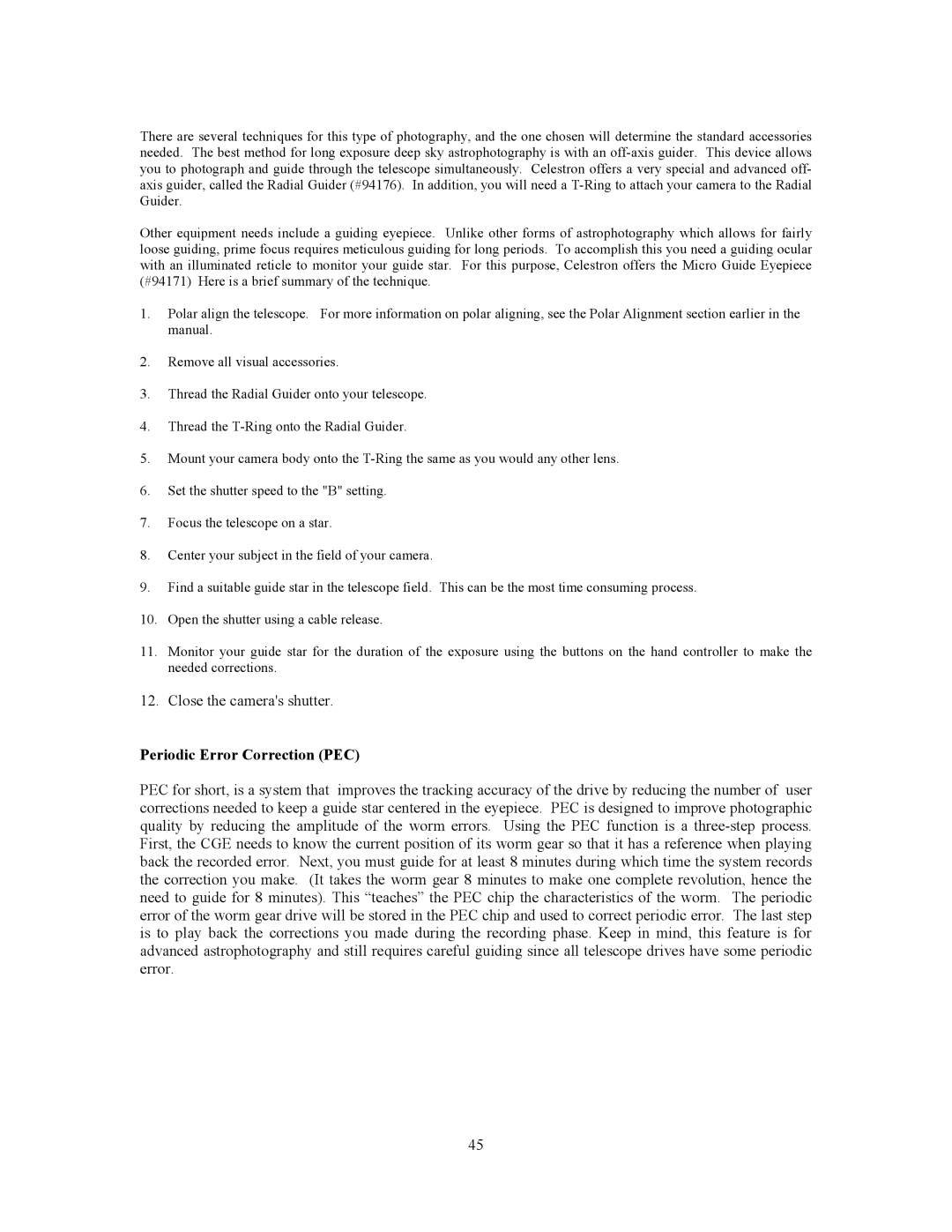There are several techniques for this type of photography, and the one chosen will determine the standard accessories needed. The best method for long exposure deep sky astrophotography is with an
Other equipment needs include a guiding eyepiece. Unlike other forms of astrophotography which allows for fairly loose guiding, prime focus requires meticulous guiding for long periods. To accomplish this you need a guiding ocular with an illuminated reticle to monitor your guide star. For this purpose, Celestron offers the Micro Guide Eyepiece (#94171) Here is a brief summary of the technique.
1.Polar align the telescope. For more information on polar aligning, see the Polar Alignment section earlier in the manual.
2.Remove all visual accessories.
3.Thread the Radial Guider onto your telescope.
4.Thread the
5.Mount your camera body onto the
6.Set the shutter speed to the "B" setting.
7.Focus the telescope on a star.
8.Center your subject in the field of your camera.
9.Find a suitable guide star in the telescope field. This can be the most time consuming process.
10.Open the shutter using a cable release.
11.Monitor your guide star for the duration of the exposure using the buttons on the hand controller to make the needed corrections.
12.Close the camera's shutter.
Periodic Error Correction (PEC)
PEC for short, is a system that improves the tracking accuracy of the drive by reducing the number of user corrections needed to keep a guide star centered in the eyepiece. PEC is designed to improve photographic quality by reducing the amplitude of the worm errors. Using the PEC function is a
45
